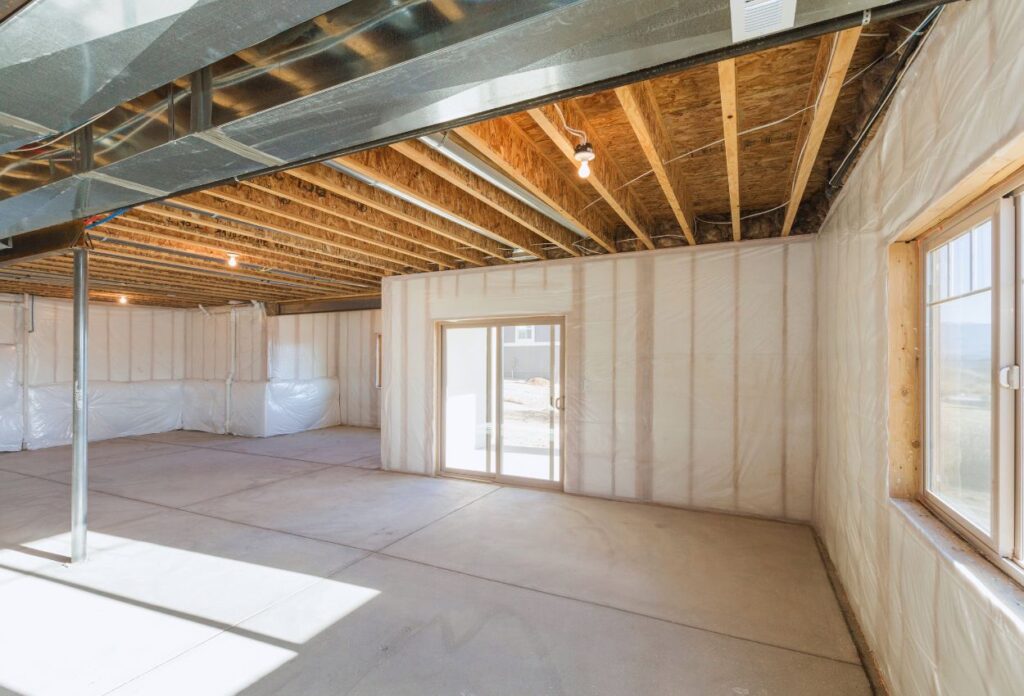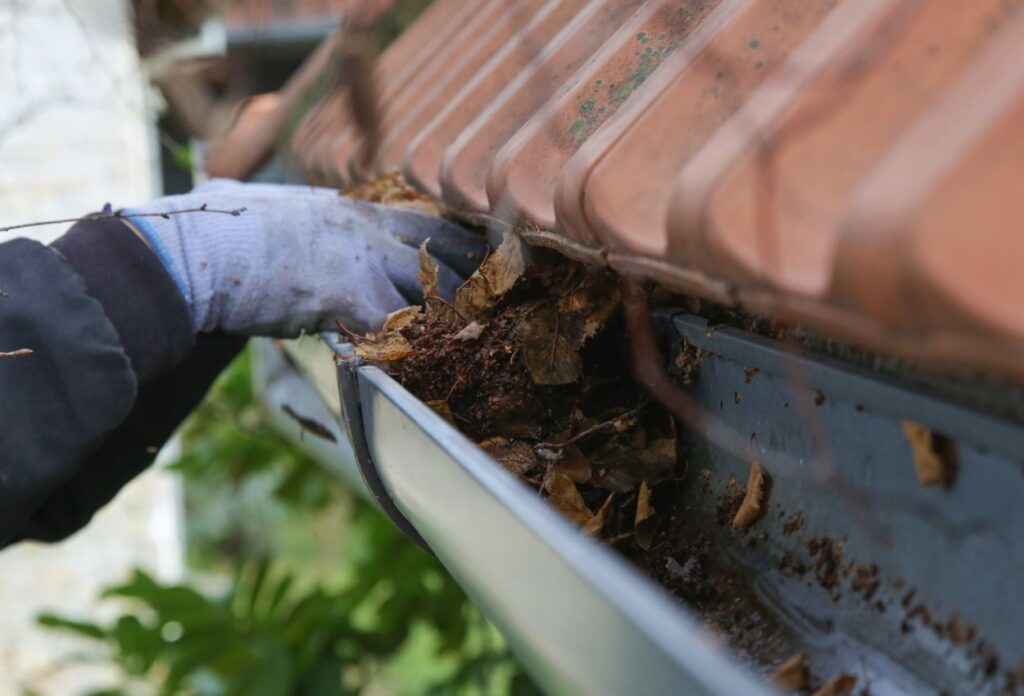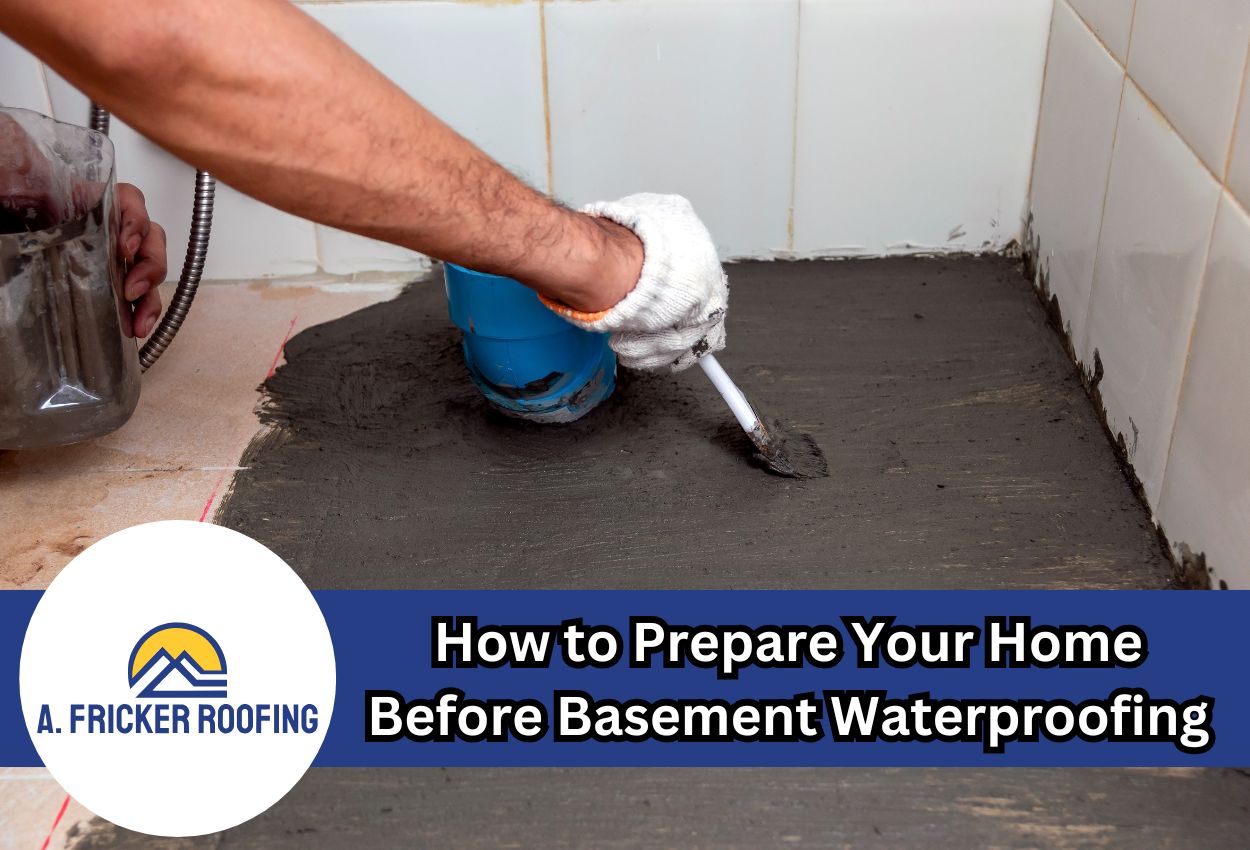Basement waterproofing is an important investment in your home. It protects your foundation, prevents water damage, and ensures your basement remains a functional and dry space. Whether you’re dealing with recurring leaks, mold issues, or just being proactive, preparing your home before the waterproofing process can make a significant difference. A well-prepared home means a smoother, more effective waterproofing job. It not only helps you save time and potential headaches but also allows us to do our work efficiently.
As a premier roofing and waterproofing company, we’ve helped countless homeowners prepare for this essential project. In this guide, we’ll walk you through each step, so you know exactly what to do before professionals arrive to waterproof your basement.
Understanding the Importance of Basement Waterproofing
Before jumping into the preparation steps, it’s crucial to understand why basement waterproofing matters.
Your basement is directly connected to your home’s foundation. Any water intrusion can weaken structural integrity, cause mold growth, and damage valuables stored in the space. Even small cracks in basement walls can allow water to seep in, leading to bigger problems over time. By waterproofing your basement, you are protecting your home’s long-term durability, increasing its value, and preventing repairs in the future.
Also Read: Basement Waterproofing 101: Pros, Cons & Costs
What Is The Best Way To Waterproof Your Basement?
There are two primary types of basement waterproofing, and you need to prepare your home based on your needs:
- Interior Waterproofing: This involves sealing cracks, applying waterproof coatings, and installing drainage systems to manage water that gets inside.
- Exterior Waterproofing: Focuses on preventing water from reaching the basement walls by sealing the foundation, improving drainage, and installing waterproof membranes.
You can read more about the differences between interior vs. exterior basement waterproofing in our guide.
Regardless of the method you hire us for, proper preparation ensures the process is effective and hassle-free.
Preparation Tips To Keep In Mind For a Successful Basement Waterproofing Job
Here are some ways you can prepare your home for basement waterproofing.
Clear the Basement Space

One of the first and most crucial steps in preparing for basement waterproofing is clearing out the space. Many homeowners use their basement to store everything from holiday decorations to old furniture. If you are one of them, it is time to move your belongings so basement walls can be waterproofed.
- Remove furniture and stored items: If your basement is used for storage or as a living space, relocate all items to another part of your home temporarily. Waterproofing professionals will need full access to walls, floors, and drainage areas.
- Protect valuable items: If certain belongings cannot be moved, cover them with plastic sheets or waterproof covers to shield them from dust and potential moisture exposure.
- Remove carpeting or flooring if necessary: Some waterproofing methods may require access to the basement floor, so removing carpets, tiles, or other coverings can be beneficial.
Inspect and Identify Problem Areas
While professionals will conduct a thorough inspection, it’s helpful for homeowners to identify problem areas in advance.
- Look for visible cracks in walls and floors: Even hairline cracks can allow moisture to seep through over time. Regular inspection of foundation walls and floor joints can help catch potential water entry points before they become serious issues.
- Check for mold or mildew growth: Musty smells or visible mold patches indicate excessive moisture and possible leaks. Pay special attention to corners, behind furniture, and areas with poor ventilation, as these are common spots for mold development.
- Observe water stains or efflorescence: White, chalky deposits on basement walls signal that water has been seeping through. These mineral deposits often appear in patterns that can help identify the source and extent of water infiltration problems.
- Monitor standing water or damp spots: If your basement frequently has puddles after rain, it suggests drainage issues. Watch for recurring wet areas, especially near walls or floor joints, as these patterns can reveal where water is entering the basement space.
Ensure Proper Access to the Basement
During waterproofing, professionals need clear and unobstructed access to key areas of your basement. Make sure to clear pathways to basement entry points by moving any obstacles or furniture blocking doors or stairwells. Unlock all access points, including basement windows and crawl spaces, so they are accessible. Additionally, some waterproofing methods require power tools or water for sealing solutions, so make sure these sources are available for the crew.
Plan for Noise and Disruptions
Waterproofing work can be noisy, and the process may take several days, depending on the scope of the project.
Inform family members about the project timeline so they can plan accordingly. Be prepared for potential temporary power or water shut-offs, as some installations require brief disruptions. If you have pets or young children, make arrangements to keep them safe and away from the work area.
Consult Your Waterproofing Experts
Before the waterproofing work begins, consult with your chosen waterproofing company to go over the final details. Discuss the scope of work, whether it involves interior or exterior waterproofing, crack sealing, sump pump installation, or other treatments. Understand the estimated timeline and ask about warranties or maintenance tips to keep your basement dry for years to come.
With these preparatory steps, your waterproofing project will be successful, keeping your basement dry for years to come.
Pro Tip: Address Exterior Drainage Issues

Waterproofing doesn’t stop at the basement walls, the surrounding landscape plays a major role in directing water away from your foundation.
Clean your gutters and downspouts regularly to prevent water from pooling around your home’s foundation. Extend downspouts to direct water at least six feet away from the basement, and check that the ground slopes away from your home instead of toward it. If necessary, consider professional landscaping adjustments to enhance water drainage and prevent future water intrusion.
Start Your Basement Waterproofing Project Today!
Preparing your home before basement waterproofing helps the process run smoothly and effectively. By clearing the space, identifying problem areas, allowing proper access, and consulting with experts, you set the stage for long-lasting protection against water damage.
At A. Fricker Roofing and Waterproofing, we specialize in professional basement waterproofing and are committed to providing homeowners with the highest quality service. If you’re considering waterproofing your basement, reach out to us today at (918) 402-7167 for a consultation. Protect your home before water problems escalate—because prevention is always better than major repairs.
FAQ’s
A. Basement waterproofing costs typically range from $2,500 to $15,000, depending on your home’s size and the severity of water issues. Interior solutions like sealants and crack repairs start around $600 to $2,000, while exterior waterproofing involving excavation and foundation work can cost $10,000 to $20,000. The investment varies based on factors like labor costs in your area, necessary repairs, and chosen waterproofing methods.
A. Yes, a sump pump is highly effective at keeping basements dry by actively removing water before it can accumulate. The system collects groundwater and rainfall in a basin, then automatically pumps it away from your foundation when water levels rise. While not a complete waterproofing solution on its own, a sump pump works alongside other waterproofing measures like proper drainage and sealed walls to provide comprehensive moisture protection.

